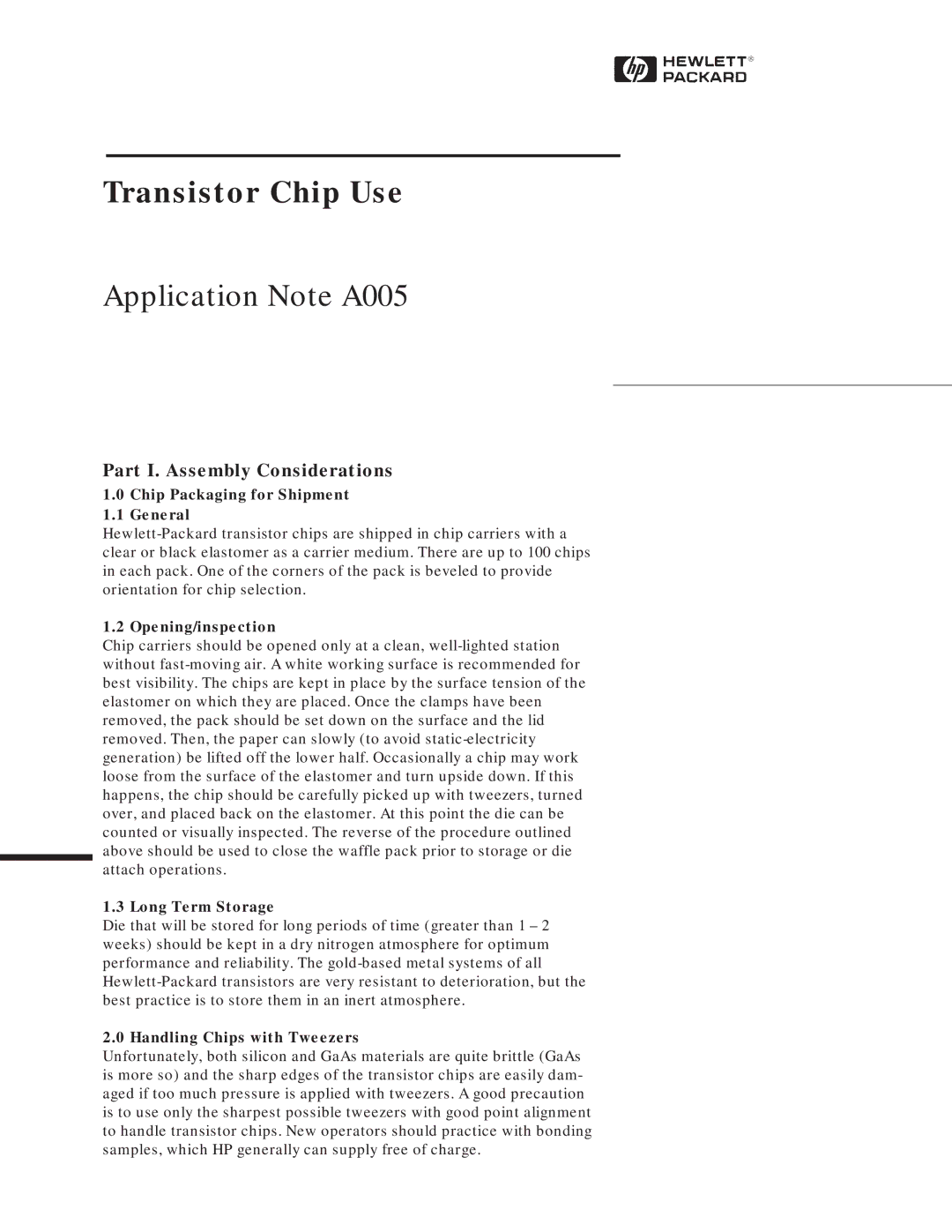Transistor Chip Use
Application Note A005
Part I. Assembly Considerations
1.0Chip Packaging for Shipment
1.1General
Hewlett-Packard transistor chips are shipped in chip carriers with a clear or black elastomer as a carrier medium. There are up to 100 chips in each pack. One of the corners of the pack is beveled to provide orientation for chip selection.
1.2 Opening/inspection
Chip carriers should be opened only at a clean, well-lighted station without fast-moving air. A white working surface is recommended for best visibility. The chips are kept in place by the surface tension of the elastomer on which they are placed. Once the clamps have been removed, the pack should be set down on the surface and the lid removed. Then, the paper can slowly (to avoid static-electricity generation) be lifted off the lower half. Occasionally a chip may work loose from the surface of the elastomer and turn upside down. If this happens, the chip should be carefully picked up with tweezers, turned over, and placed back on the elastomer. At this point the die can be counted or visually inspected. The reverse of the procedure outlined above should be used to close the waffle pack prior to storage or die attach operations.
1.3 Long Term Storage
Die that will be stored for long periods of time (greater than 1 – 2 weeks) should be kept in a dry nitrogen atmosphere for optimum performance and reliability. The gold-based metal systems of all Hewlett-Packard transistors are very resistant to deterioration, but the best practice is to store them in an inert atmosphere.
2.0 Handling Chips with Tweezers
Unfortunately, both silicon and GaAs materials are quite brittle (GaAs is more so) and the sharp edges of the transistor chips are easily dam- aged if too much pressure is applied with tweezers. A good precaution is to use only the sharpest possible tweezers with good point alignment to handle transistor chips. New operators should practice with bonding samples, which HP generally can supply free of charge.

